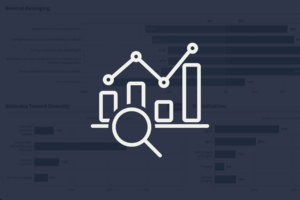This article is the second in a 3-part series on motherhood in the pandemic. The first part is available here.
In March 2020, one year ago this week, the world changed for me and for many, many mothers, all around the world. In America, in the midst of Women’s History Month, as our country became the epicenter of the COVID-19 outbreak, working mothers had to suddenly shift their professional responsibilities in order to accommodate their children’s minute-by-minute needs as well.
Some mothers lost their jobs or voluntarily left them behind, losing not only their incomes but, in too many cases, their health insurance plans as well. Still others, who did have the privilege of working from home, were faced with shouldering the bulk of unpaid domestic labor plus new night shifts to accommodate their lack of availability for daytime work, as they stayed home to manage virtual school and fill critical childcare gaps.
While this should come as no surprise — women have faced countless obstacles and hardships for centuries — the pandemic has exacerbated existing disparities and challenges that exist for mothers in particular.
In 2020, we stepped back into the 80s . . .
Although pre-pandemic, women comprised the majority of the American workforce, by August 2020 their participation rate had plummeted to its lowest since the 1980s. By September, an astounding 865,000 women had dropped out of the workforce compared to 216,000 men: the obvious result of childcare burdens.
The COVID-19 pandemic has only magnified traditional gender role expectations and unconscious bias that have played a role in the mass exodus of mothers from the labor force over the past few years. Not only have women’s jobs and careers suffered more greatly than their male counterparts during the pandemic and its accompanying economic crisis, but the lost work previously held by many women has threatened progress toward gender equity and middle-income gains that have grown increasingly dependent on women.
While many factors have played a role in this COVID departure from the workforce, caregiving responsibilities continue to top the list, followed by other factors such as lack of affordable childcare, pay gaps between mothers and fathers, the motherhood penalty, and a nonexistent national paid leave policy for working parents. According to UN Women, the ripple effect of having fewer women in the workforce will hinder women’s independence and economic progress for decades, while also negatively impacting psychological and physical wellbeing, reversing any pre-pandemic trends toward gender equality.
With mothers of small children three times more likely than fathers to have lost their jobs during the pandemic, women overall have left their workforce at a rate four times higher than men. For Black women and for women of color, that rate is even higher. In fact, America lost 16% of the jobs previously held by single mothers of young children, compared with only 6% those held by single fathers. With a limited network to fill childcare gaps, many of these former co-breadwinner and primary breadwinner moms left their jobs because they had no choice, inadvertently leading many of these once-working mothers to survive off unemployment benefits and rely on food pantries to feed their children.
There is no work-life balance under this impossible workload…
While trying to manage their professional responsibilities during the pandemic, many mothers are also juggling healthcare appointments, meal plans and meal prep, house repairs, grocery lists, virtual school support, and caregiving for older family members as well — all of which can take a major toll on physical and mental health.
The pandemic has wreaked havoc on Millennial mothers, in particular. Currently the nation’s largest generation in the labor force, Millennial mothers, according the Center for American Progress, were nearly three times more likely than Millennial fathers to report being unable to work in order to care for their children as a result of school and childcare closures.
And, although Millennial men have demonstrated more progressive attitudes toward gender equality when it comes to paid work, their attitudes toward childcare responsibilities have hardly shifted, as the majority of Millennial men still hold strong to cultural norms centered on the notion that caregiving and house work are primarily the responsibility of women. These added responsibilities have had a negative impact on Millennial mothers’ attachment to the workforce, and research across every industry shows that many Millennial mothers’ inability to work will have significant long-term implications for women’s lifetime earnings and will exacerbate the gender pay gap.
The impact on specific demographics…
Women of color, who are less likely to have jobs that can be done remotely and more likely to have jobs in healthcare, service, hospitality, or early education (jobs which cannot often be worked from home), have likely been the most severely affected. With a disproportionate number of Black, Latinx, and Indigenous women being essential, frontline workers, they know all too well the perpetual cycle of racism and misogyny that permeates our nation’s domestic economy. While many of these women struggle to find safe, affordable childcare options, many of them must also grapple with the horrific reality that they are at greater risk of contracting and dying from,COVID-19, since non-Hispanic Blacks, Latinos, and Indigenous Americans have the highest rates of coronavirus mortality, according to the CDC.
Teacher-mothers, specifically, have been caught in the crossfire of criticism regarding the safe reopening of schools and ever-changing CDC guidelines. Will teachers be safe from contracting the virus if they’re forced to teach in-person? How will they manage to enforce mask mandates or create collaborative learning environments with their students spread at least six feet apart? And, if so many parents — and the CDC — now want schools to return to in-person learning, shouldn’t teachers be considered frontline workers, eligible for the vaccine alongside healthcare professionals?
Teacher-mothers, like so many American women, have been plagued by the dual burden of balancing their professional duties as teachers — communicating with students and their parents throughout the day, revising lesson plans to work in an online format, grading assignments, conducting assessments, and paying attention to what each child needs for success — with their personal duties as mothers and teachers to their own children at home. Teacher-mothers are often seen as the better-trained parent to provide instruction and report still having to perform more unpaid domestic work at home as well.
Single mothers, who make up 80.4% of America’s 13.6 million single-parent households — raising 22.4 million children across the country — have paid a tremendous price as well. In order to work or go to school, single parents often rely on full-time childcare. Yet, many single mothers have been furloughed from their jobs and have struggled to provide for their children on meager state unemployment benefits, which are not designed to cover the cost of sustaining a single-parent household. Often isolated and over-burdened, many single mothers found themselves forgoing sleep and months of self-care in a desperate attempt to keep their households up and running.
Imagine if you happen to live at the intersection of any of these identities: a single, Black, working teacher-mother, for instance. The load must feel nearly unbearable.
The pandemic is making unpaid work more visible…
In sum, despite trends toward gender equality, the vast majority of housework, childcare, and elder care responsibilities — unpaid work that does not factor into a person’s professional job responsibilities — is still falling on women. Even in households where partners equally contribute to overall household labor, research shows that mothers are engaged in far more task management (e.g., coordinating child care pickup/drop off, doctor appointments, home repairs, etc.), mental labor planning (e.g., grocery lists, kids’ birthday logistics), and crisis management than their partners.
By societal default, women have performed more unpaid work for centuries and have covered the cost of social care that supports economies, helps sustain families, and fills the social service gap. This unpaid domestic work, according to Forbes, is worth nearly $10 trillion to the annual global economy, yet it remains undervalued and mostly invisible simply because there is no pay involved.
While the pandemic has certainly increased the share of mothers’ unpaid labor, even before it women were still assuming roughly 75% of the 16 billion hours of unpaid work done every day around the world. The time that women spend performing this invisible labor significantly limits their time to engage in paid labor or to work longer hours, often stifling their career development or burdening them with the ills of financial insecurity.
In the midst of the COVID-19 pandemic, the existing gender gap has only widened, at least doubling since 2020 began, and shedding light on the ways in which unpaid domestic work has been the world’s social safety net, making it possible for some to earn an income and advance through the ranks of professional success, while stifling the growth and employment opportunities of others — mostly women — who find themselves shouldering almost all the tasks and responsibilities of unpaid domestic labor.
This article is the second piece in a 3-part series on motherhood in the pandemic. The first part is available here. “A Year Without Sleep” was written by TDM consultant and data scientist Oriana Leach. To learn more about what your business can do to celebrate Women’s History Month and support working mothers within your organization, download our free Women’s History Month Programming Guide.














